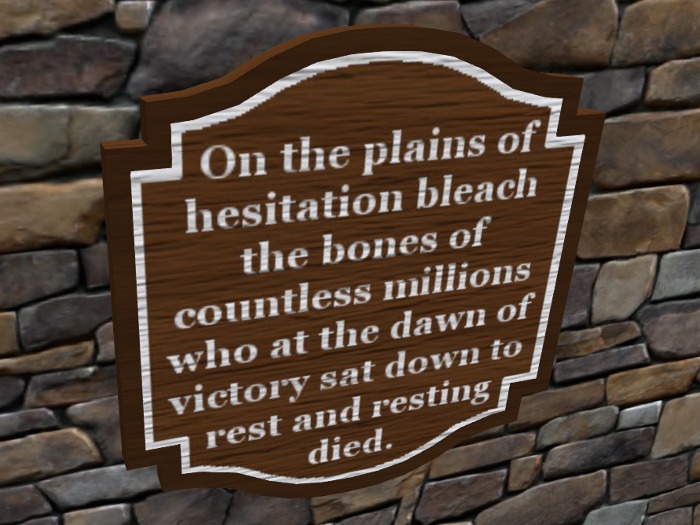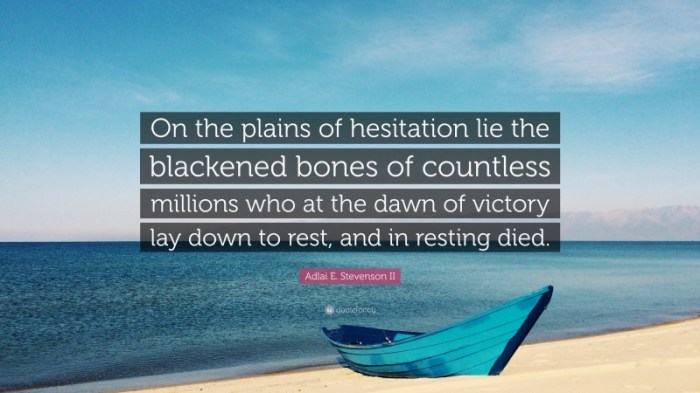On the plains of hesitation, we encounter a metaphorical landscape where fear, doubt, and uncertainty cast their shadows. It is a place where dreams and aspirations are held captive, and progress seems elusive. Yet, within this realm of indecision lies the potential for profound growth and transformation.
As we explore the obstacles that hinder our forward movement, we discover the importance of self-reflection, introspection, and the support of others. Through a framework for decision-making and action, we can navigate the plains of hesitation with courage and resilience.
Defining the Plains of Hesitation

The plains of hesitation is a metaphorical realm where individuals find themselves stuck in a state of indecision and uncertainty. It is a place where choices seem overwhelming, and the path forward is unclear.
Being on the plains of hesitation can be a daunting and emotionally taxing experience. It can lead to feelings of anxiety, doubt, and frustration. Individuals may feel paralyzed by fear of making the wrong decision or taking the wrong step.
Examples of Situations
Situations that can lead to the plains of hesitation include:
- Choosing a career path
- Making a major life decision, such as getting married or having children
- Facing a difficult challenge or obstacle
- Experiencing a period of transition or change
Obstacles on the Plains of Hesitation

The Plains of Hesitation are a vast and treacherous landscape where individuals often find themselves stuck, unable to move forward. This stagnation is caused by a multitude of obstacles that prevent them from taking the necessary steps towards progress and growth.
Fear, doubt, and uncertainty are the most formidable obstacles on the Plains of Hesitation. Fear paralyzes individuals, preventing them from taking risks and venturing outside their comfort zones. Doubt erodes their confidence, making them question their abilities and the value of their pursuits.
Uncertainty creates a sense of confusion and disorientation, making it difficult to navigate the path ahead.
Overcoming Obstacles
Overcoming the obstacles on the Plains of Hesitation requires a combination of courage, determination, and a shift in mindset. Here are some strategies to help individuals make progress:
- Acknowledge and confront fears:Recognize and accept the fears that hold you back. Once you acknowledge them, you can begin to develop strategies to overcome them.
- Challenge self-limiting beliefs:Identify the negative thoughts and beliefs that are holding you back. Question their validity and replace them with more positive and empowering beliefs.
- Embrace uncertainty:Uncertainty is an inherent part of life. Learn to tolerate it and see it as an opportunity for growth and exploration.
- Set small, achievable goals:Break down large, overwhelming tasks into smaller, more manageable steps. This will make them seem less daunting and more achievable.
- Seek support:Surround yourself with positive and supportive people who believe in you and encourage you to move forward.
Navigating the Plains of Hesitation

Venturing through the Plains of Hesitation can be a daunting task. However, by embracing self-reflection, seeking support, and employing a strategic framework for decision-making, individuals can navigate these uncertain landscapes and emerge with clarity and purpose.
Self-Reflection and Introspection
Navigating the Plains of Hesitation requires a deep understanding of one’s values, goals, and motivations. Through self-reflection and introspection, individuals can gain insights into their inner workings and identify the root causes of their hesitation.
Amidst the vast plains of hesitation, where decisions dance upon the edge of uncertainty, clarity emerges like a beacon. MRT Step 1 Pyramid examples serve as guiding structures, illuminating the path forward. They offer a roadmap, guiding us through the labyrinth of possibilities, empowering us to make informed choices that resonate with our aspirations and propel us beyond the realms of hesitation.
- Identify Core Values:Determine what is truly important and meaningful in life, as these values will serve as guiding principles when making decisions.
- Set Clear Goals:Establish specific, measurable, achievable, relevant, and time-bound goals to provide direction and focus amidst the uncertainty.
- Explore Fears and Limiting Beliefs:Acknowledge and confront any fears or limiting beliefs that may be holding you back from taking action.
Growth and Transformation on the Plains of Hesitation

The plains of hesitation can be a daunting and uncertain place, but they can also be a catalyst for profound personal growth and transformation. When we are faced with challenges and obstacles, we have the opportunity to learn, adapt, and evolve.
By embracing the lessons of the plains of hesitation, we can emerge stronger, more resilient, and more capable than ever before.
Lessons from the Plains of Hesitation, On the plains of hesitation
One of the most important lessons we can learn from our experiences on the plains of hesitation is the importance of perseverance. When we are faced with setbacks and challenges, it is easy to give up. However, if we can learn to persevere, we will eventually overcome any obstacle.
Another important lesson we can learn from the plains of hesitation is the importance of self-reliance. When we are on our own, we have no one to rely on but ourselves. This can be a daunting experience, but it can also be incredibly empowering.
By learning to rely on ourselves, we can develop a sense of independence and self-confidence that will serve us well in all aspects of our lives.
Examples of Successful Navigation
There are many examples of individuals who have successfully navigated the plains of hesitation and emerged stronger. One such example is Nelson Mandela. Mandela spent 27 years in prison for his opposition to apartheid in South Africa. However, he never gave up hope.
He continued to fight for what he believed in, and eventually, he was successful in helping to end apartheid.
Another example of someone who successfully navigated the plains of hesitation is Malala Yousafzai. Malala was shot in the head by the Taliban for speaking out in favor of education for girls. However, she did not let this setback stop her.
She continued to fight for her cause, and she eventually won the Nobel Peace Prize for her work.
Questions Often Asked
What is the metaphorical meaning of “the plains of hesitation”?
It represents a state of indecision and uncertainty, where individuals are held back by fear, doubt, and a lack of clarity.
What are some common obstacles encountered on the plains of hesitation?
Fear of failure, perfectionism, procrastination, and a lack of self-confidence can all hinder progress.
How can we overcome these obstacles and navigate the plains of hesitation?
Self-reflection, support systems, and a framework for decision-making can help us identify and address our challenges.
What is the potential for growth and transformation on the plains of hesitation?
By confronting our fears and embracing the lessons it offers, we can emerge stronger, more resilient, and better equipped to handle future challenges.